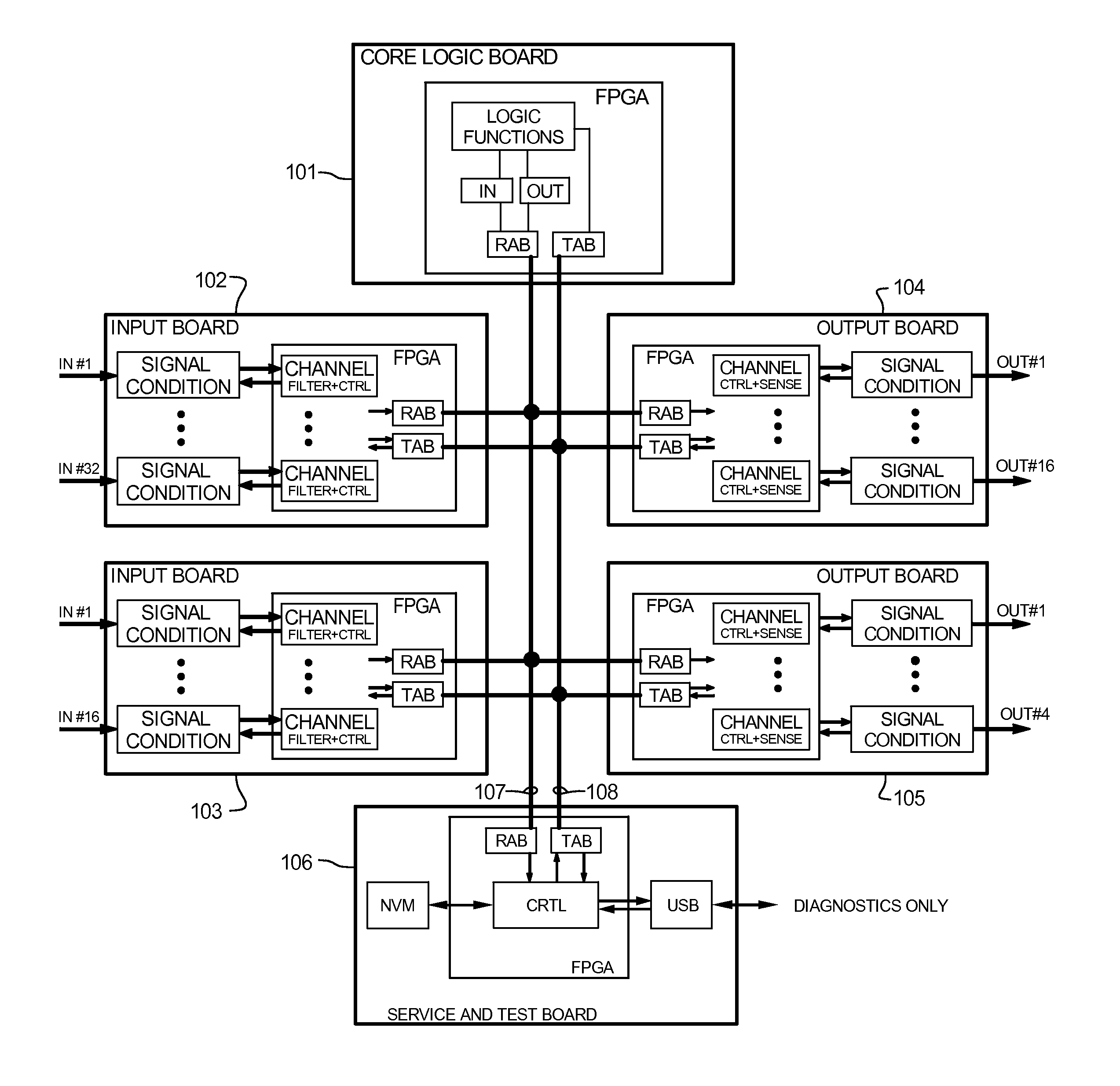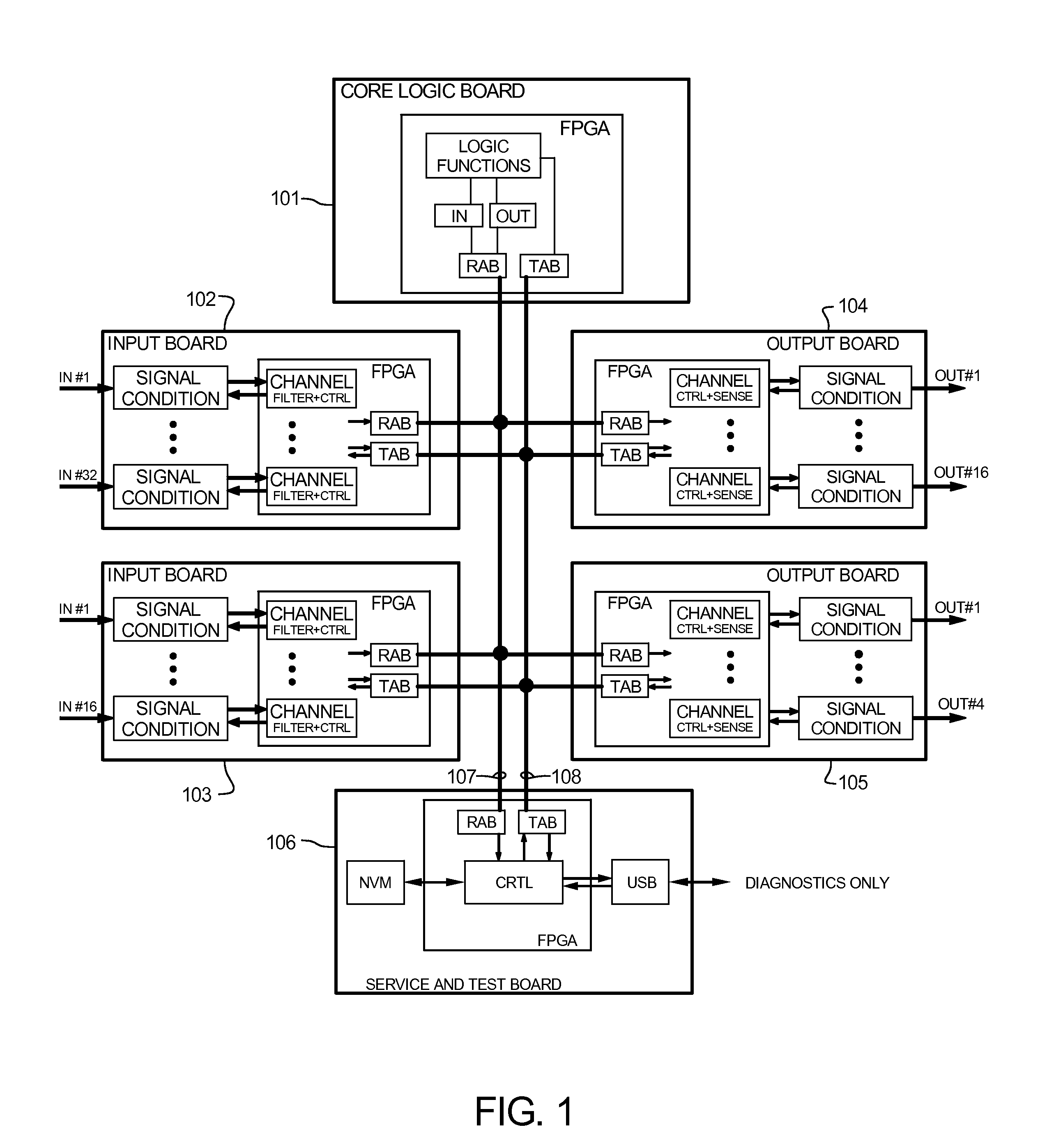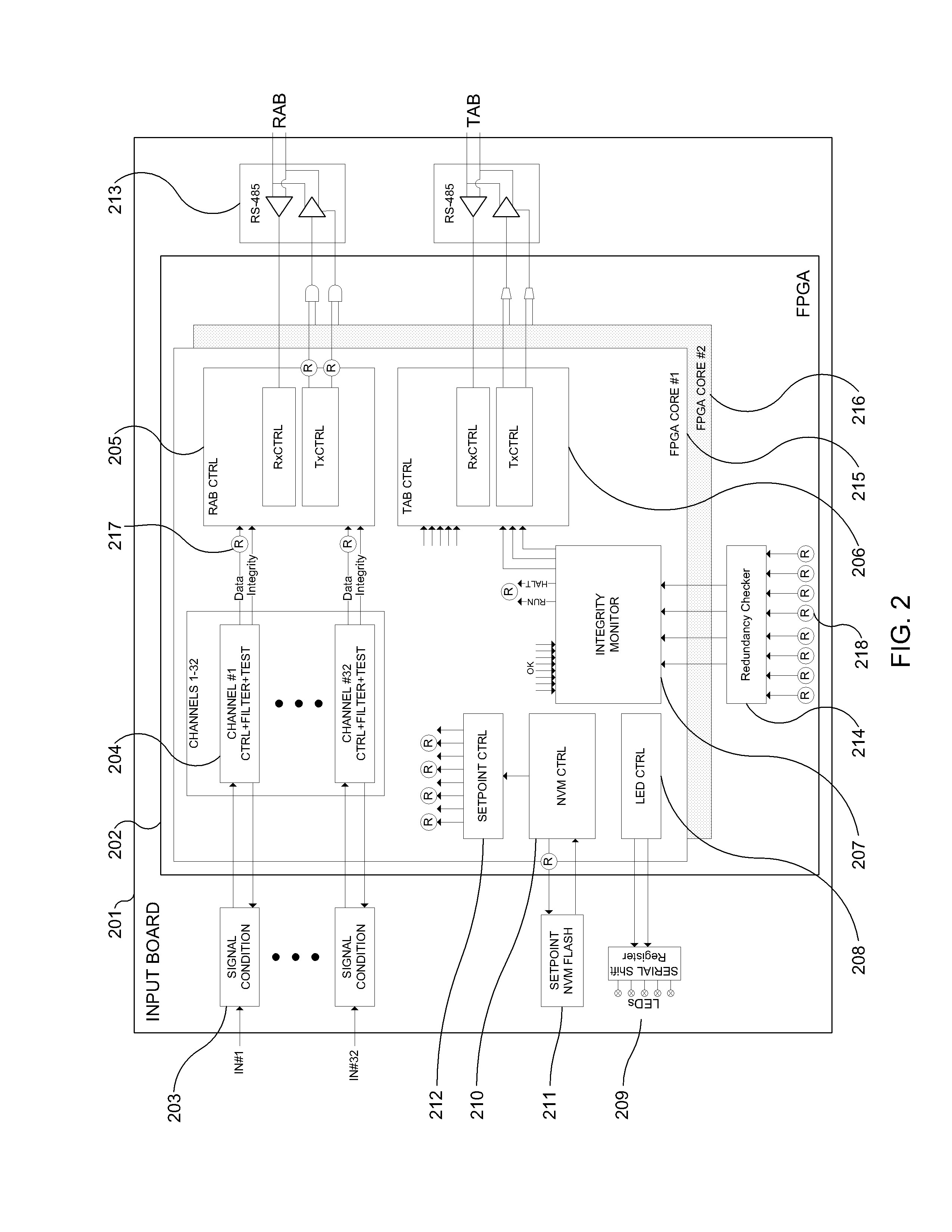Advanced logic system
a logic system and logic logic technology, applied in the field of industrial process monitoring and control, can solve the problems of difficult to solve software inherent operational problems, create a reliable plant protection system, and use of software based microprocessors, and achieve the effects of high reliability, full flexibility and modularity, and improved operability and maintainability
- Summary
- Abstract
- Description
- Claims
- Application Information
AI Technical Summary
Benefits of technology
Problems solved by technology
Method used
Image
Examples
Embodiment Construction
[0025]A description of terms related to the present invention follows.
[0026]Advanced Logic System (ALS) is a general title of the hardware architecture platform for the present invention. The ALS is a digital logic controller that is used to monitor and control a process.
[0027]A Field Programmable Gate Array (FPGA) is a semiconductor device containing programmable logic components referred to as “logic blocks,” or “programmable interconnects.” FPGAs are known in the art.
[0028]A circuit board refers to a printed circuit board (PCB), also known as board, a card, or a module.
[0029]A channel is the term used for a circuit, which independently can measure or detect a field input, or control a field output. A board typically has a number of channels, such as 4, 8, 16 or 32 channels per board, but other numbers are possible. A channel will typically include signal conditioning, a self test feature, various basic control features, and surge suppression.
[0030]A rack contains a number of boar...
PUM
 Login to View More
Login to View More Abstract
Description
Claims
Application Information
 Login to View More
Login to View More - R&D
- Intellectual Property
- Life Sciences
- Materials
- Tech Scout
- Unparalleled Data Quality
- Higher Quality Content
- 60% Fewer Hallucinations
Browse by: Latest US Patents, China's latest patents, Technical Efficacy Thesaurus, Application Domain, Technology Topic, Popular Technical Reports.
© 2025 PatSnap. All rights reserved.Legal|Privacy policy|Modern Slavery Act Transparency Statement|Sitemap|About US| Contact US: help@patsnap.com



